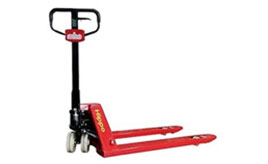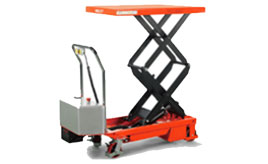Optimizing Operations: A Comprehensive Guide to Warehouse Equipment
In the dynamic landscape of modern logistics, the efficient functioning of warehouses plays a pivotal role in ensuring smooth supply chain operations. Warehouse equipment forms the backbone of these facilities, providing the tools necessary for streamlined storage, handling, and transportation of goods. In this comprehensive guide, we delve into the world of warehouse equipment, exploring various types, functionalities, and the indispensable role they play in the logistics ecosystem.
Warehouse equipment encompasses a diverse range of tools and machinery designed to facilitate the efficient management of goods within a storage facility. From traditional pallets and racks to advanced automated systems, these tools are crucial for optimizing space utilization, minimizing operational costs, and enhancing overall productivity.
Types of Warehouse Equipment
2.1 Warehouse Trucks
Warehouse trucks are versatile workhorses within any warehouse setting. They come in various types, each designed for specific tasks, ranging from simple material handling to intricate maneuvers in confined spaces.
2.1.1 Hand Pallet Truck
A staple in any warehouse, the hand pallet truck is a manual device used for lifting and moving palletized loads. With a straightforward design, it offers a cost-effective solution for basic material handling needs.
2.1.2 Power Pallet Trucks
For increased efficiency and reduced manual effort, power pallet trucks come into play. These motorized devices enhance load-carrying capacities and are ideal for transporting heavier loads over short distances.
2.1.3 Reach Trucks
In warehouses with high racks, reach trucks prove invaluable. Equipped with extendable forks and a compact design, they excel in reaching and retrieving loads from elevated storage spaces.
2.1.4 Forklift Trucks
Forklift trucks are the workhorses of warehouse equipment, capable of lifting and transporting heavy loads with precision. They are available in various configurations to suit different warehouse layouts and requirements.
2.2 Docking Equipment
Ensuring a seamless transition of goods between the warehouse and transportation vehicles is crucial. Docking equipment, including lifts, ramps, and levellers, plays a pivotal role in this process.
2.2.1 Docking Lifts
Docking lifts provide vertical movement between different levels, facilitating the loading and unloading of goods at varying heights. They are essential for warehouses with multiple levels or mezzanines.
2.2.2 Docking Ramps
Docking ramps bridge the gap between the warehouse and the transport vehicle, allowing for smooth movement of goods. They are particularly beneficial for warehouses dealing with a variety of transport heights.
2.2.3 Dock Levellers
Maintaining a level transition between the warehouse floor and the transport vehicle is crucial for safe and efficient loading/unloading. Dock levellers help bridge the height difference, ensuring a seamless transfer of goods.
2.3 Stackers
Stackers are versatile tools for lifting and stacking goods. They come in various configurations, including walk-behind and ride-on models, offering flexibility in handling different types of loads and navigating through warehouse aisles.
2.4 Doors & Shelters
The choice of warehouse doors and shelters is integral to maintaining an optimal working environment. Sectional doors, high-speed doors, and loading dock shelters contribute to energy efficiency, temperature control, and protection against the elements.
Warehouse Equipment Integration
In the age of smart warehouses, the integration of warehouse equipment with advanced technologies is becoming increasingly prevalent. Automation, robotics, and data analytics play a pivotal role in optimizing warehouse operations, enhancing efficiency, and minimizing errors.
Choosing the Right Warehouse Equipment
Selecting the appropriate warehouse equipment requires a thorough understanding of the specific needs and constraints of the facility. Factors such as warehouse layout, storage requirements, load characteristics, and budget considerations influence the decision-making process.
Manual Stacker
A manual stacker, also known as a hand stacker or pallet jack, is a type of warehouse equipment used to lift and move pallets of goods. It is a smaller and more maneuverable alternative to a forklift, and is often used in situations where space is limited or where heavy loads do not need to be lifted to very high heights
Understanding Semi Electric Stackers in Warehouse Equipment
A Semi Electric Stacker is a material handling tool used in warehouses. It combines features of both manual and electric stackers, blending the advantages of both for increased efficiency and reduced operator fatigue.
FAQ Section:
Q1: What are Warehouse Trucks?
A1: Warehouse trucks are a category of material handling equipment used in warehouses for the movement and transportation of goods. They include hand pallet trucks, power pallet trucks, reach trucks, and forklift trucks, each designed for specific tasks within a warehouse setting.
Q2: What is a Hand Pallet Truck?
A2: A hand pallet truck is a manual device used for lifting and moving palletized loads within a warehouse. It is operated by hand and is a cost-effective solution for basic material handling needs.
Q3: What are Power Pallet Trucks?
A3: Power pallet trucks are motorized devices designed to enhance the efficiency of material handling. They are capable of carrying heavier loads over short distances, reducing manual effort and increasing productivity.
Q4: What are Reach Trucks?
A4: Reach trucks are specialized warehouse trucks designed for efficient storage and retrieval of goods in high racks. They are equipped with extendable forks and a compact design, making them ideal for navigating confined spaces.
Q5: What are Forklift Trucks?
A5: Forklift trucks are versatile industrial vehicles used for lifting and transporting heavy loads. They come in various configurations to suit different warehouse layouts and are essential for a wide range of material handling tasks.
Q6: What are Docking Lifts?
A6: Docking lifts are equipment used to facilitate vertical movement between different levels within a warehouse. They play a crucial role in the loading and unloading of goods at varying heights, particularly in warehouses with multiple levels or mezzanines.
Q7: What are Docking Ramps?
A7: Docking ramps bridge the gap between the warehouse and transport vehicles, allowing for smooth movement of goods. They are particularly beneficial for warehouses dealing with varying transport heights.
Q8: What are Dock Levellers?
A8: Dock levellers are devices used to maintain a level transition between the warehouse floor and transport vehicles during loading and unloading. They help bridge the height difference, ensuring a seamless transfer of goods.
Q9: What are Stackers?
A9: Stackers are versatile material handling equipment designed for lifting and stacking goods. They come in various configurations, including walk-behind and ride-on models, providing flexibility in handling different types of loads.
Q10: What is the Role of Doors & Shelters in Warehouses?
A10: Doors and shelters in warehouses serve multiple purposes, including energy efficiency, temperature control, and protection against the elements. Sectional doors, high-speed doors, and loading dock shelters contribute to creating an optimal working environment.
Conclusion:
In conclusion, warehouse equipment plays a pivotal role in the efficient functioning of modern logistics facilities. From the fundamental warehouse trucks to advanced automation systems, each piece of equipment contributes to optimizing space utilization, minimizing operational costs, and enhancing overall productivity. The integration of technology further augments the capabilities of warehouse equipment, paving the way for smart warehouses of the future. Understanding the diverse types of warehouse equipment and making informed choices based on specific requirements are essential steps toward achieving an efficient and streamlined warehouse operation.
PT BSL ENGINEERING INDONESIA
Specialist in Material Handling, Engineering, Design and Procurement PT.BSL Engineering Indonesia
021-2927650 0812-9811-1780 (Telp./WA)
Ruko Sentra Niaga Kalimalang, Jl. Ahmad Yani, Kayuringin Jaya, Bekasi, Jawa Barat 17000



